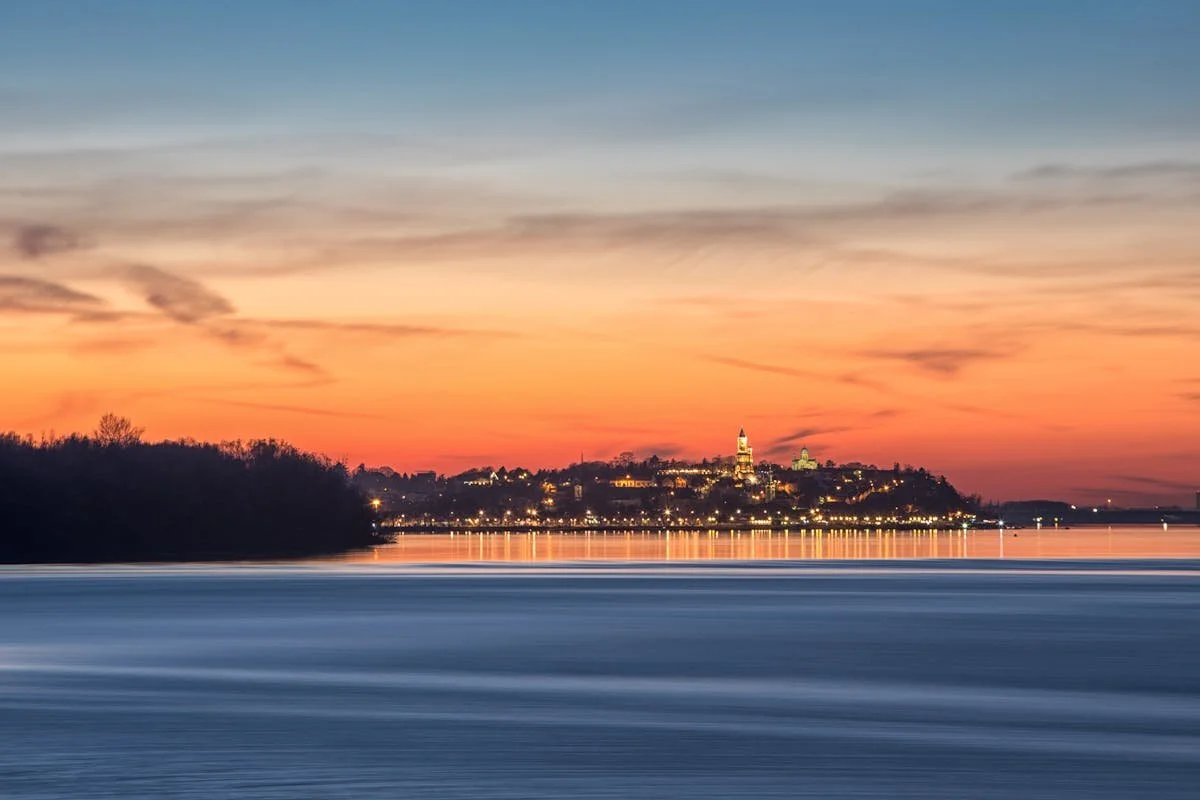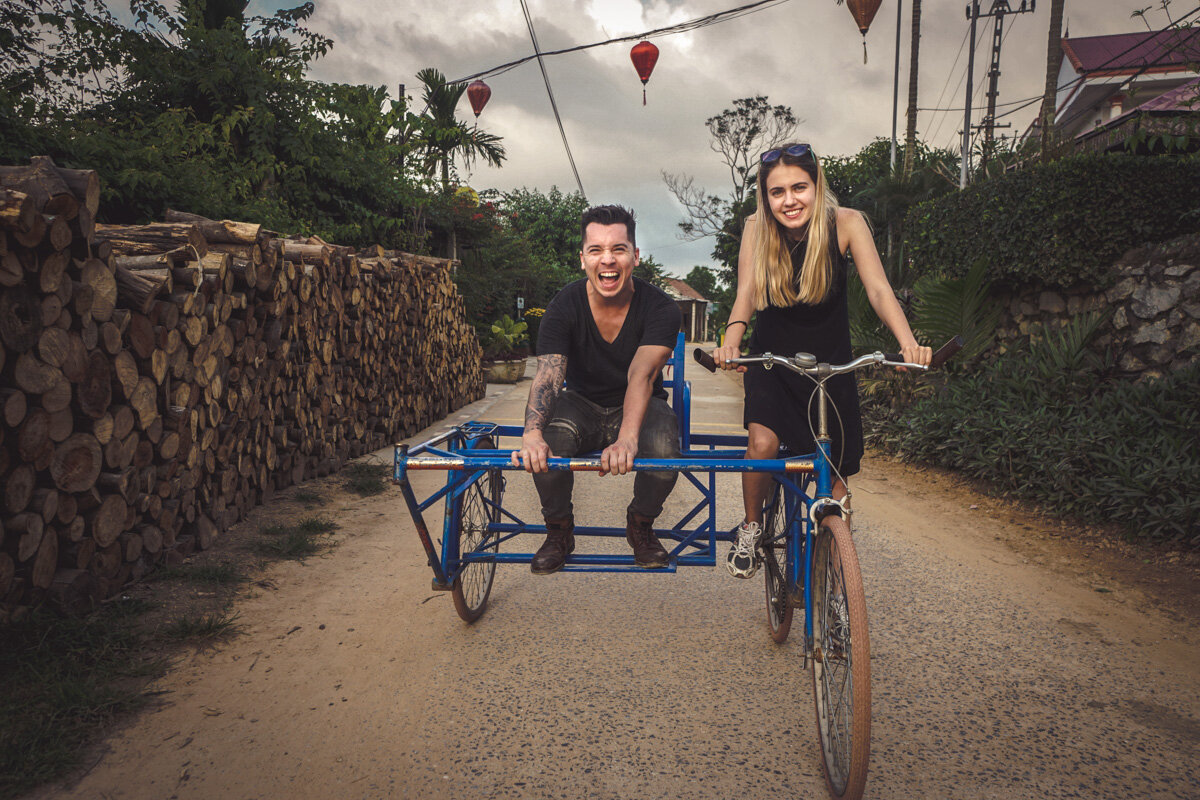Hike to Everest Base Camp: Things You Should Know
/A village somewhere in Himalayas
Hike to Everest Base Camp for first-timers
Everest Base Camp Trek is one of the most famous trekking destinations in the world that takes you through the lush forests of rhododendrons, authentic Sherpa settlements and panoramic views of the mountains. If you are planning to repeat the epic 1953 journey that Sir Edmund Hillary & Tenzing Norgay Sherpa took in 1953, keep reading. This destination being a top bucket list trip for all trekkers, there are many things that adventurers need to know about the Everest Base Camp trek.
Table of Contents
Things to know before starting your base camp hike
Major Attractions you will see during the base camp trek
Things to know before starting your hike to Everest Base Camp
Arriving at Lukla Airport
Lukla Airport, also known as Tenzing-Hillary Airport, has been rated one of the most dangerous airports in the world for over 20 years. Lukla Airport is located at an altitude of 2,800m with a remarkably short runway length of just 527m. The journey to the Everest Base Camp starts from Lukla airport, or as some call it, the “Gateway to Everest.”
Everest Base Camp trek difficulty
When people hear “Everest”, they might think that some particular expertise and skills are needed to explore this part of the world. Yes, if you want to climb the Everest mountain that is true. For the trek to Everest Base Camp, however, all you need is a little bit of preparation and the right equipment. Over the years, thousands of people with a basic level of fitness have conquered the way to the Base Camp.
With that being said, the trek will require some level of preparation and stamina as you will be walking 15km a day (the average walking pace is 5km per hour) generally upwards.
How long does it take to hike to Everest Base Camp
The hike will take 12 days to complete and the whole trip will probably take 14 days if you count pre and post-stay at Kathmandu. The trek is done at slow speed due to acclimatization and constant increase of altitude.
Runway of Lukla Airport (known as Tenzing-Hillary Airport), Nepal
Major Attractions you will see on the hike to Everest Base Camp
Listed below are popular places and attractions you’ll find during your Everest Base Camp trek.
Namche Bazar
Namche Bazar is a small village located at an altitude of 3440m above sea level, nestled in the Himalayas east of Kathmandu. It is known for being one of the first stops on the way to the highest peak in the world. You can get to Namche Bazar on foot from Lukla in 8-10 hours. In general, this distance can be covered in one day, but due to the difference in altitude (Lukla is located at an altitude of 2860m), travelers prefer to stretch the way for two days. This first leg of the journey helps climbers acclimate themselves to the rough conditions. This is necessary to avoid or reduce mountain sickness, the symptoms of which can appear in completely healthy people.
For the same reason, many guidebooks recommend spending up to two days in Namche Bazar to acclimate completely. In cases where mountain sickness occurs, helicopters can fly up to Namche Bazar (and slightly higher) during rescue operations in the mountains.
Namche Bazar is considered the capital city of the Khumbu region. Situated on crescent-shaped mountain slopes, Namche Bazar provides a stunning view of the mountains across the valley.
Namche is the main trading center. You can easily find internet cafes, restaurants, and even bakeries. Every Saturday, Namche holds a weekly market where you can buy goods at affordable rates. This includes trekking gear, clothes and equipment, last-minute supplies and snacks.
Namche Bazar, Khumbu region
Tengboche Monastery
Tengboche Monastery is one of the oldest monasteries in the Khumbu region, established around 1915. The monastery is also known as Dawa Chowling Gompa and is located in the Tengboche village that resides within the UNESCO World Heritage Site Sagarmatha National Park.
Tengboche is located on the main route leading to the Everest base camp and to the peak itself, so you will visit this Tibetan Bhuddist monastery during the 4th or 5th day of your trek, depending on your Everest Base Camp trek itinerary. Think about how many hopes and ambitions passed through this village, how many great and unknown climbers had a stopover here, and how many of them succeeded!
Here, climbers entrust their fate to the Buddha and receive llamas' blessings before conquering the peaks. hose descending thank the Buddha, fate, llamas and everyone they can for their safe return. In this sense, Tengboche is undoubtedly an existential, historically and culturally significant place that’s not to be missed.
The Tengboche Monastery is the center point. If you travel to the east, you will discover the pearl of the Himalayas, the insanely beautiful Ama Dablam. If you travel west, you will find the unapproachable and beautiful Cholatse, 6,335m above sea level.
To the north, you encounter Everest – the main attraction for some adventures and a place of despair and pain for others. In the south you will find Namche Bazar, see the yaks with wise eyes, and taste the whiskey - a local source of pure happiness.
Because of this, Tengboche is the place to decide one’s fate, so people go the Tengboche Mountain Buddhist Monastery to look inside themselves and gain strength from others.
Tengboche functions mainly on donations and, considering that it is on the main route leading to Everest from the side of Nepal, the donations are generous and regular. That’s why the monastery in Tengboche is quite prosperous compared to others located in the Himalayas, far from the hiking trails.
Tengboche Monastery on the way to the Everest Base Camp. Credit: Ivan Borisov, flickr
Everest View Hotel
Everest View Hotel is considered to be the only star hotel in the Khumbu region. This hotel was opened in 1971, providing an excellent 360° awe-inspiring view of different famous peaks. It was listed in the Guinness Book of World Records (2004) as the highest placed hotel in the world (3,880m/12,800ft).
Kalapatthar
Kalapatthar, meaning “Black Rock” in Nepali, is the most visited place in the Khumbu region and a notable landmark. . This is a very famous & popular spot that every trekker doing the Everest Base Camp Trek passes through. With an elevation of 5,545m/18,200ft, it provides a clear closeup view of Mt. Everest and other stunning mountains.
Don’t miss the hike there. It’s what trekkers call a “once in a lifetime experience”.
Sagarmatha National Park
Sagarmatha National Park is one of the highest national parks in the world covering a total area of 1,148 sq. km and with most of the park lying above 3,000 m. This park was established in 1976, becoming the nation’s first national park.
Being one of the major attractions in the Khumbu region, the park is home to more than 3,000 Sherpas. The park is a natural habitat to 118 species of birds, including the Himalayan Monal, Blood Pheasants and the Red Billed Chough. Many endangered species also inhabit the park, like the Snow Leopard, Red Panda, Himalayan Tahrs, & Musk Deer.
Sherpa Lifestyle
Everest is the cherished dream of all adventurous people. To challenge nature, test themselves, or leave a mark in history – everyone has their own purpose. But no matter how hard you prepare, Sherpas will always surpass you.
Sherpas are the brave people who were born and raised on the lap of the Himalayas. They are the true inhabitants of the Himalayan region of Nepal. For decades, they have been playing the role of guides and porters, accompanying countless groups of climbers. The experience of the Sherpas is invaluable to climbers since they adapted to the harsh living conditions in the highlands from birth
For many non-adventurers), the words “Sherpa” and “porters” mean the same thing, which in fact is not true. Sherpas are a nation. These people live mainly in the Himalayas— specifically in the eastern part of Nepal, in the Everest region, in the Indian part of the Himalayas. Sherpas traditionally work as porters during climbing expeditions. This is why the words are often mistakenly interpreted as synonyms.
You can find their settlement in big villages like Lukla, Namche & Khumjung. The culture, traditions and simplicity of Sherpa people are inspiring and admirable. Tenzing Norgay Sherpa, Pasang Lamhu Sherpa, Gyalzen Norbu Sherpa, Apa Sherpa are some of the world-renowned Sherpas in the world for their unsurpassed mountaineering achievements and skills.
At the Everest Base Camp
The hike to Everest Base Camp can’t go without staying at the camp itself as it is one of the trek’s major attractions. Standing at an elevation of 5,380m, it is the highest base camp in the world with treacherously unpredictable weather patterns. The base camp is the point from which the ascent of Mt. Everest begins.
While you can’t get a view of the Mt. Everest summit from here, you can catch a mesmerizing sight of Mt. Nuptse, Mt. Pumori and Khumbu icefall.
Ama Dalman Mountain
Peak Climbing
Peak Climbing is an ideal choice of adventure to carry out in the Everest region for a more thrilling experience, beyond the usual hiking. There are numerous peaks and mountains in the Everest region. You can conquer Mt. Everest itself or you can conquer other famous peaks in this region, such as Mera Peak, Ama Dalman and Island Peak.
Nighttime in Everest Base Camp
Trekking at night in Everest Base Camp is not recommended to anybody due to the extremely cold temperatures and slippery paths which make it very hard to walk at night. The best thing about nighttime at Everest Base Camp is stargazing.
Stargazing is one of the best opportunities and experiences you can have during the Everest Base Camp Trek. It is said that, due to light pollution in cities and hometowns, we are unable to see the stars in the sky at night time. But, due to no light pollution in the Everest Region, people have witnessed the galaxy during Everest Base Camp trek. If you are lucky, then you can also go stargazing after reaching Gorakshep, which is at an altitude of 5,140m.
Accommodation in Everest Base Camp
Despite having a unique and rough geographical structure, there are plenty of moderate to luxurious accommodations available along the Everest Base Camp trail. As a matter of fact, one of the world’s highest star-rated hotels (Everest View Hotel) is in the Everest region. And from the top of the hotel, you can get a beautiful close-up view of Mt. Everest.
Accommodations in Everest Base Camp are very good compared to other destinations in Nepal. From anywhere between $5 to $200 per night, you can stay at Everest Base Camp hotel/lodges surrounded by beautiful mountains, but you will always get a clean bed sheet and pillowcase no matter where you stay.
As you climb to the summit, you will find more basic tea houses to stay at. Due to limited hotels/lodges in the Everest region, sometimes, you may not get a room, especially during the peak season (April to May and September to November). That is why, if you’re trekking alone there will be less chance for you to get a room. But, if you’re trekking with local agencies, then you are more likely to get a room. If you book with local agencies, the guide will handle your food, health, and accommodation. They will look for the hotel/lodges to stay at.
As for food, you will be charged an extra $5 to $30 per meal. You can have different choices for meals during the Everest Base Camp trek i.e. Nepali, Indian, Chinese and continental. However, booking with agencies makes it even easier because your guide will handle the food for you. Similarly, you can tell your guide about food allergies, so that they can be alert.
Everest Base Camp
Important Tips for the Everest Base Camp Hike
Tips are extra information to helps you avoid any setbacks
Walk Slowly during the EBC trek
While trekking in the EBC, the most important thing you need to remember is to walk slowly.
If you are new to trekking activities then this can save you from lots of trouble. Most of the trekking trails are very rough and not paved. Because of that, you have to walk on rough, uneven roads. As you gain altitude, it will be hard to walk fast and you can also suffer from altitude sickness. So always remember to walk slowly from the beginning.
Stay Hydrated
Being hydrated during trekking is another important tip. You may not know, but while trekking you will lose lots of fluids from your body which can cause you dehydration. Unknowingly, you may suffer from altitude sickness too. Therefore, to prevent any risks, you have to drink at least 2-4 liters of water daily.
Be Physically Fit and Prepared
There is no age limitation or set physical requirements for Everest Base Camp trekking. However, having a healthy body is very important for trekking. You normally will have to walk around 3-5 hours daily during the EBC trek. To overcome that tiresome work, you have to boost your stamina and legs. That is why incorporating a light exercise that increases your leg muscles and stamina can really help you.
Not only that but having a strong mentality is also needed when trekking in the EBC. Overcoming your fear is your first priority.
Watch out for Yaks
Most of the Yaks in the Everest region are domesticated and are mainly used for supplying goods from low to high altitudes. They may not look like aggressive animals, but if you block their way or touch them, they can hit you really hard. Therefore, if you ever come face to face with the Yak caravans, lean on a side wall to protect yourself. If you want to take their picture, don’t block their way. Keep some distance from them so they can’t hit you.
Bring Flashlights for Night Treks
On your trek to Everest Base Camp, flashlights are an essential part of your gear. Since the days can be long, you might find yourself walking after sunset, especially during the shorter days. A good, durable flashlight will help you navigate in the dark, particularly in the lower, less-illuminated parts of the trek. It's always wise to carry extra batteries or a backup light source in case one fails.
For even more Everest Base Camp Trek tips and tricks, check out “Best tips for Everest Base Camp Trek”.
Himalayan Yak, Nepal
For even more Everest Base Camp Trek tips and tricks, check out “Best tips for Everest Base Camp Trek”.
Written in cooperation of Executive Thrillseekers and Chin Thapa Magar, his bio below:
First and foremost, I love writing blogs and articles regarding where I travel. Ever since I started to travel, I started to share my experience and blogging. As for now, I work as a professional guide in Nepal to give the best experience to others. I believe in the power of nature that can open the true self of people. That is why I’m obsessed with presenting new ideas and destinations to people. In addition to traveling and trekking in my life, I am a huge fan of photography, books and tasting new foods too. The main motto of my life is “Live your way so that I can’t blame later”.


























